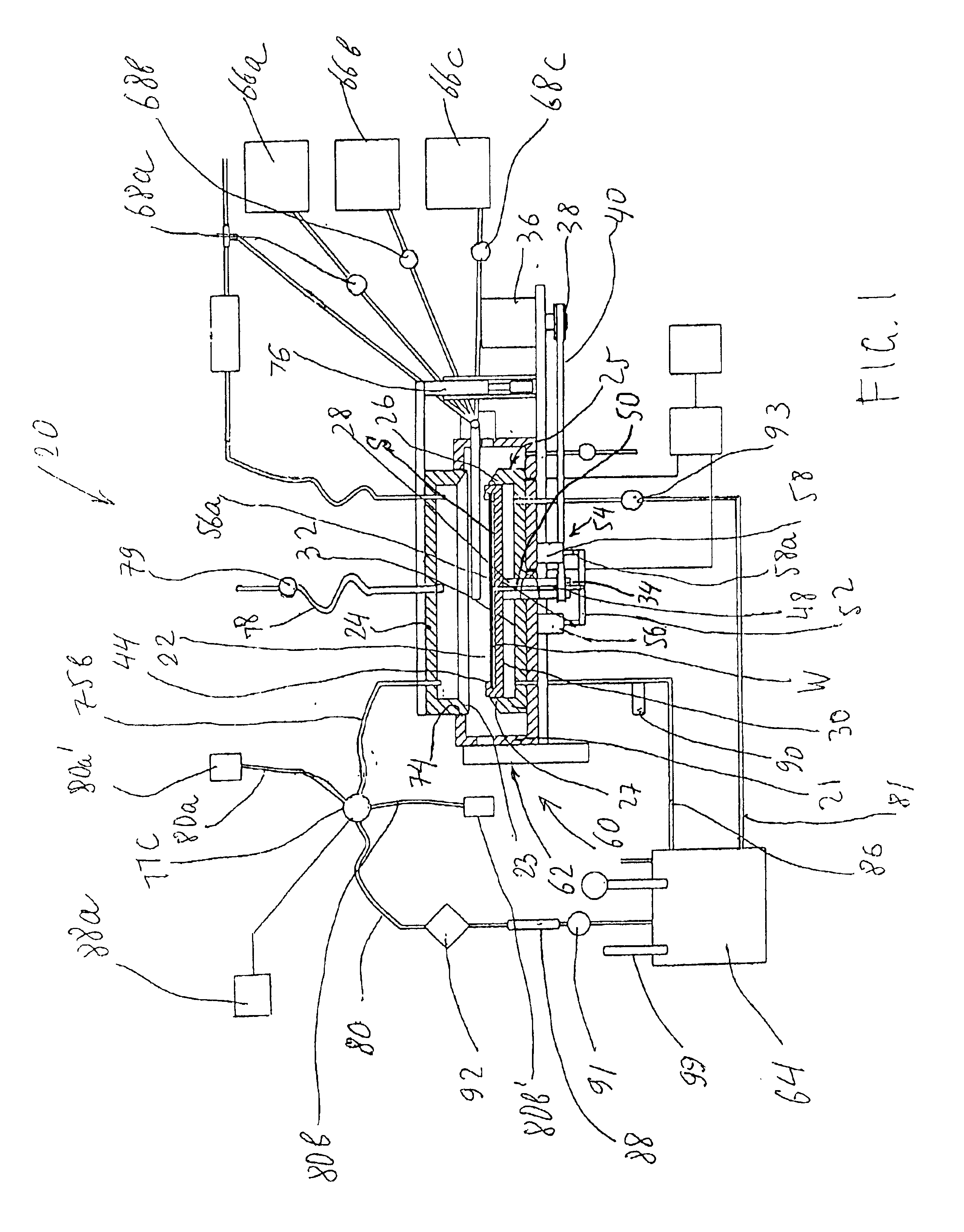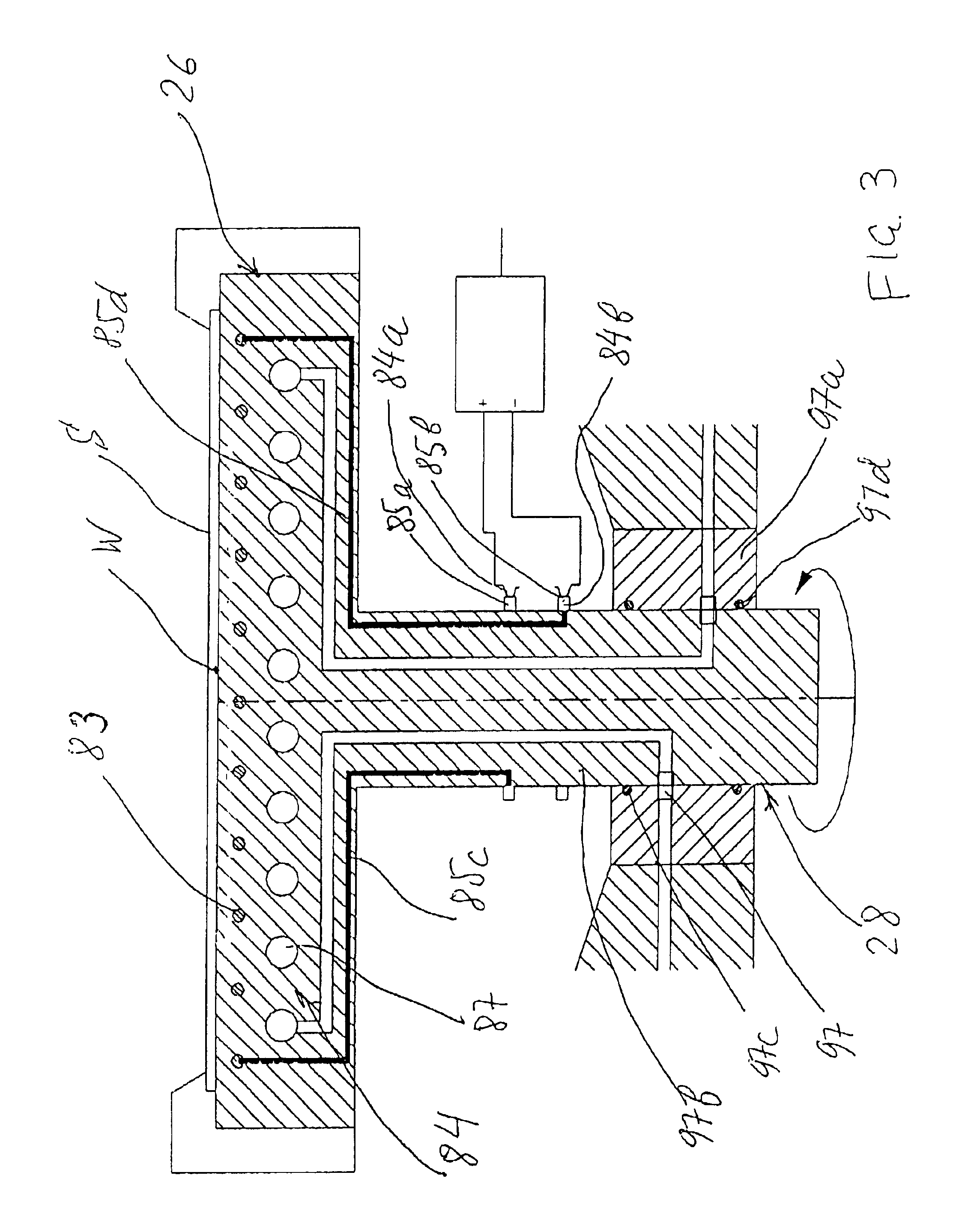Method and apparatus for electroless deposition with temperature-controlled chuck
a technology of electroless deposition and temperature control, applied in the direction of spraying apparatus, liquid/solution decomposition chemical coating, coating, etc., can solve the problems of increasing maintenance requirements, non-uniform deposition of plated metallic materials, and increasing the complexity of electroplating equipment, so as to prevent thermal decomposition of solution, reduce the formation of gas bubbles, and prevent the accumulation of bubbles on the surface of the substrate.
- Summary
- Abstract
- Description
- Claims
- Application Information
AI Technical Summary
Benefits of technology
Problems solved by technology
Method used
Image
Examples
Embodiment Construction
The electroless-plating apparatus of the invention, which is schematically shown in FIG. 1 and is designated as a whole by reference numeral 20, has a housing 21 that contains an electroless-plating chamber 22 (hereinafter referred to as “chamber 22”) that can be hermetically closed with a cover 24 located above the chamber 22. In a closed state, the chamber 22 may withstand increased pressures and is provided with appropriate seals (not shown) between the connected parts, such as the cover, chamber, ports, feedthrough devices, fittings, etc. More specifically, the pressure that can be developed inside the chamber 22 may reach 2 atmospheres above the atmospheric pressure or be reduced below the atmospheric pressure, e.g., down to 0.1 atmospheres.
The chamber 22 is either made of or has the inner surface coated with a chemically stable material that can withstand the action of aggressive solutions used in the operation process of the apparatus 20 under high temperatures and under high...
PUM
| Property | Measurement | Unit |
|---|---|---|
| temperature | aaaaa | aaaaa |
| temperature | aaaaa | aaaaa |
| temperature | aaaaa | aaaaa |
Abstract
Description
Claims
Application Information
 Login to View More
Login to View More - R&D
- Intellectual Property
- Life Sciences
- Materials
- Tech Scout
- Unparalleled Data Quality
- Higher Quality Content
- 60% Fewer Hallucinations
Browse by: Latest US Patents, China's latest patents, Technical Efficacy Thesaurus, Application Domain, Technology Topic, Popular Technical Reports.
© 2025 PatSnap. All rights reserved.Legal|Privacy policy|Modern Slavery Act Transparency Statement|Sitemap|About US| Contact US: help@patsnap.com



